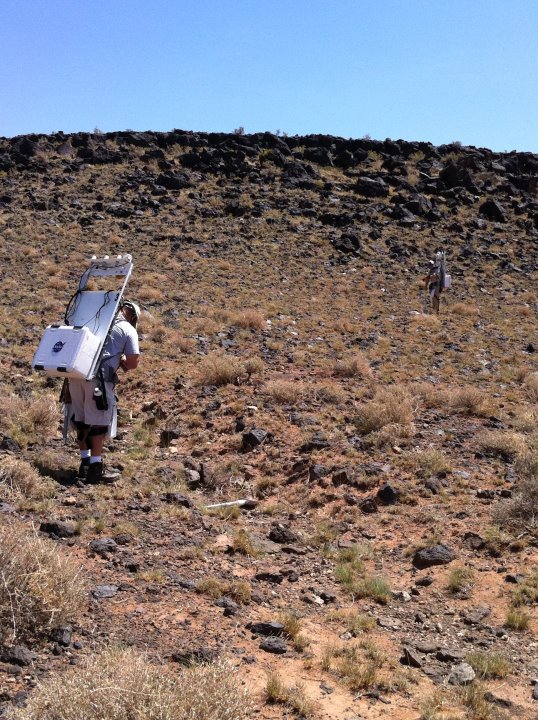
By Dean Eppler,
Dean is this year’s Desert RATS Science Operations Lead
I’m responsible for putting together the team of scientists that will be working with the crew in the field when they are doing science activities at Black Point. I was originally trained as a geologist, but after more than 20 years in the space program, I’ve developed a specialty in defining and executing field science operations – the actual activities a scientist would do outside of a laboratory to understand and explore a particular location. I’ve been fortunate to work at the South Pole, several hundred miles from the North Pole, on volcanoes, in the Grand Canyon, and in everything from a helicopter to a space suit.
After graduating from Governor Livingston High School in New Jersey in 1970, I went to St. Lawrence University in Canton, New York in 1974. I received a Masters Degree from the University of New Mexico in Albuquerque in 1976 and after a stint in the U.S. Army, I attended Arizona State University in Tempe, Arizona, where I received a Ph.D. in 1984. I have been working in the Space Program since 1990, when I moved to Houston as an employee of Science Applications International Corporation. My Desert RATS history goes back to 1997, when Mr. Joe Kosmo and I were part of the first Desert RATS team that went to Death Valley to do ergonomic studies of what geologists do in the field. On that first venture, and almost 10 years of subsequent RATS trips, I was the test subject while Dr. Sudhakar Rajulu, a biomechanics expert, did motion studies of my activities as a did a variety of geologic investigations. In 1998, I “graduated” to doing space suited activities, and for the next 8 years, I was the principal space suit test subject on our almost yearly excursions to Arizona and California. In 2007, I moved up to the science management area, and in 2009, I was hired by NASA, in part to build on my experience on the previous Desert RATS exercises to expand the science support part of the test.
Last year, we tested a 14-day lunar exploration mission, with a full science team supporting the operation…now, what that means in simple terms is that when an astronaut is out on a planet’s surface, doing scientific exploration, there is a wide variety of people supporting them. Some of these folks are from Johnson Space Center’s Mission Operations Directorate and they are concerned with things like the astronaut’s health and safety, the timeline of the day’s operation, and what to do in an emergency. Our science team last year was responsible for paying attention to the scientific part of the mission – what do we want to accomplish scientifically, how is the crew doing it, do they need any scientific expertise to supplement their considerable talents, and are we seeing significant discoveries that we need to pay close attention to? To accomplish that, we had approximately 10 scientists sitting in the science mission control 8-12 hours a day, in effect watching over the shoulders of the crew and helping them do their job in the field.
An important part of what we’re doing is testing – trying out new ideas for things no one has done before, seeing what works, discarding what doesn’t and improving what did. Although NASA has been working on space exploration for 50 years now, there’s still a lot we don’t know how to do, and that we have to learn. The most important part of this business is ideas – thinking of new ones, and testing them so we know what works, and equally important, what doesn’t.
That’s all I have for today…I’ll be posting more details in the next couple of days about what we’re doing, and what we’re learning.

… FReE to them-
I like it